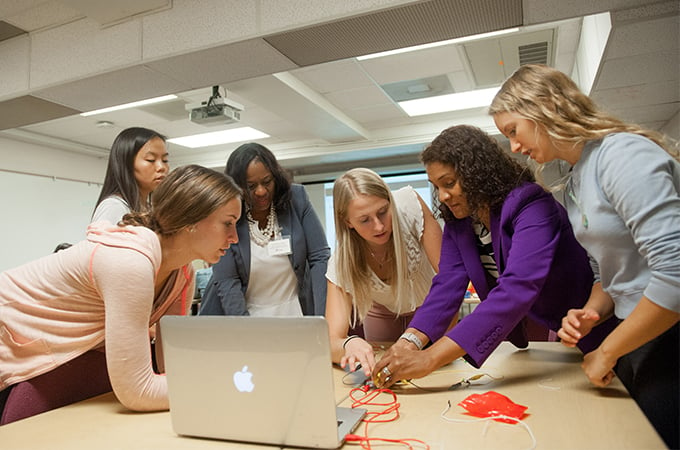“Being African American and coming from an educational environment where I experienced certain injustices, it was important to me to think about how I could widen my sphere of influence and help other students,” says Nicol Howard, professor in the University of Redlands School of Education. “That has always been important to me.”
One way in which Howard—who spent years in the classroom at the K-12 level in the Compton, Santa Ana, and Corona-Norco school districts—is working to level the educational playing field is through science, technology, engineering, and math (STEM).
In the STEM methods courses she teaches at the University of Redlands to educate future educators, graduate students utilize technology to encourage blended learning, a concept that mixes online and classroom learning. Following her example, Howard’s students create lesson plans that combine video, Google Docs, and other technology with more traditional methods such as printed material and classroom discussion.
One increasingly popular tech-related strategy is the “flipped classroom,” in which an instructor videotapes a lecture that students watch at home, freeing up classroom time for group projects and working on assignments with the teacher present to provide support. Howard says a flipped classroom is potentially helpful for kids who have families and parents who work long hours with limited time at home to help with schoolwork. In lieu of homework at home, students watch video presentations from their teacher and return to class the next day to work through projects.
Howard says that the School of Education’s emphasis on social justice compliments her personal mission for educational equity and provides her students with a valuable experience. “Students who go through a program that focuses on educational justice might be challenged to think about the needs of all students and how they’re going to apply different practices and perspectives in their own classrooms,” she says.
Currently, Howard is conducting research on educational leaders’ perspectives on elementary school computer science programs and initiatives. “Eventually, this research will help develop ways to assist elementary school teachers in implementing computer science programs,” she says. “Introducing STEM methods to underserved student populations will positively influence students’ educational experiences and prospects.”
- National Archives
- Smithsonian Education
- National Park Service
- U.S. government
- Congressman Michael C. Burgess, M.D.
- History Channel
Are you ready to take the next step toward earning your M.A. in Learning and Teaching? Tell us more about your educational interests and receive more information today.






